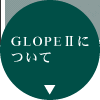予定表 -詳細情報-
| 件名 | WS 武智一貴氏 |
| 開始日時 | 2010年 1月 14日 (木曜日) 16時30分 (GMT+09:00) |
| 終了日時 | 2010年 1月 14日 (木曜日) 18時00分 (GMT+09:00) |
| 場所 | 1号館401教室 |
| 詳細 | 【報告者】:武智一貴氏(法政大学 准教授) 【タイトル】:Cross-Border Alliances and Market Competition 【場所】:1号館401教室 【概要】 This paper investigates the relationship between cross-border alliances and market competition. I estimate demand for pharmaceuticals in Japan, derive implied marginal costs and margins, and examine the relationship between alliances and firms’ costs and pricing behavior. The estimation results show that the marginal costs of products gained through alliances are lower than those for firms’ own products in the early stages of an alliance, suggesting that low cost partners are chosen as licensees. Furthermore, my test results indicate that firms are not colluded and per-unit royalty rates may be low. Because high per-unit royalty rates are related to high market markups, the anticompetitive effects of alliance caused by collusion or high markups can be small in this market. |
| カテゴリー | ワークショップ・セミナー |








